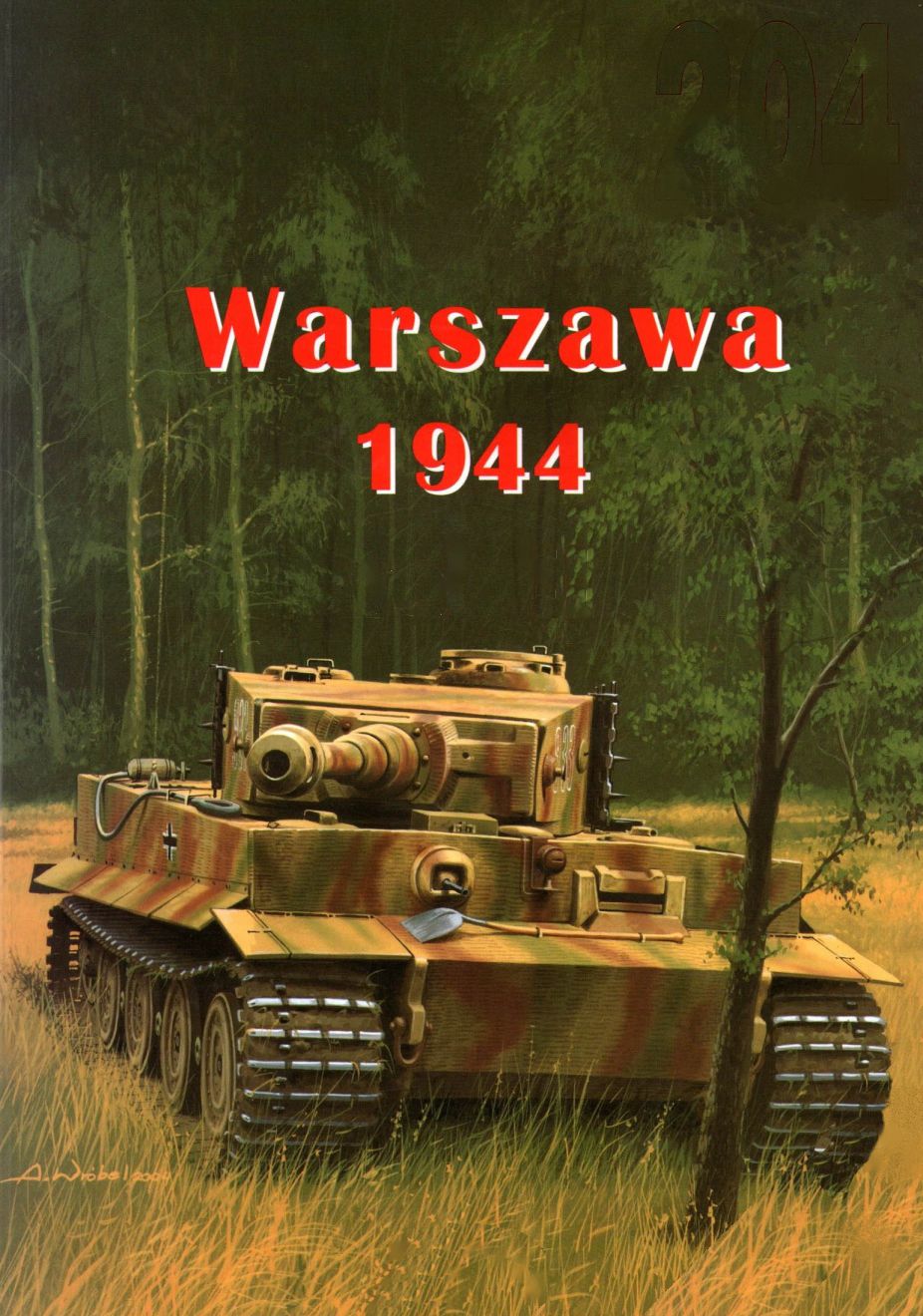
Tiger I of SS-Division “Totenkopf”, stands ready in a forest assembly area to move up to the front to neutralize a Soviet armoured incursion near Warsaw.
After the Soviet reconnaissance units reached Warsaw in late July, on 1 August 1944 the Warsaw Uprising started. Starting from an area south of Mińsk Mazowiecki, Major General Nikolai Vedeneev’s 3rd Tank Corps (part of the Soviet 2nd Tank Army) thrust northwest through Okuniew and Wołomin to Radzymin, reaching an area only three miles (five kilometers) from the strategic bridge over the Narew River at Zegrze.
In response to Soviet General’s Vedeneev’s thrust, the Germans started a tactical counter-attack near Radzymin on 31 July. The offensive, carried out by 4 understrength Panzer divisions, was to secure the eastern approaches to Warsaw and Vistula crossings, and aimed to destroy the three tank corps of the Second Tank Army in detail. Under the leadership of German Field Marshal Model, the 4th, 19th, Hermann Göring, and 5th SS Panzer Divisions were concentrated from different areas with their arrival in the area of Wołomin occurring between 31 July and 1 August 1944. Although the 3rd Tank Corps gamely defended the initial assaults of the Hermann Göring and 19th Panzer Divisions, the arrival of the 4th Panzer and 5th SS Panzer Divisions spelled doom for the isolated and outnumbered unit.
Already on 1 August, the leading elements of the 19th and 5th SS Panzer Divisions, closing from the west and east respectively, met at Okuniew, cutting the 3rd Tank Corps off from the other units of the Second Tank Army. Pressed into the area of Wołomin, the 3rd Tank Corps was pocketed and destroyed on 3 August 1944. Attempts to reach the doomed tank corps by the 8th Guards Tank Corps and the 16th Tank Corps failed, with the 8th Guards Tank Corps taking serious losses in the attempt. Although Model had planned to attack the 8th Guards Tank Corps next, the withdrawal of the 19th and Hermann Göring Panzer Divisions to shore up the German defenses around the Magnuszew bridgehead forced the remaining German forces around Okuniew to go on the defensive.
On 1 August, the freedom fighters of the Polish Home Army rose in rebellion. All over the city guerrilla fighters attacked German-held buildings and started to fortify “liberated” zones in the city and along the western bank of the Vistula, which cut Warsaw in two. In a matter of days most of the city centre had been cleared of German units. Isolated German positions were quickly seized by the Polish forces, using a mixture of captured and improvised weapons. The fighting was brutal, with little quarter being shown by either side, and soon one of the biggest street battles in military history was about to reach its tragic end. The Polish leaders depended on the swift arrival of Soviet tanks on the western side of the Vistula. However, the Home Army had failed to read the flow of the battle on the eastern bank of the Vistula between the Germans and the Soviet Second Tank Army.
As Soviet tanks cautiously entered Praga during the morning of 31 July, the eastern suburb of Warsaw, the prospects for an early liberation of Poland’s capital seemed high. Unknown to the Russians, they were about to encounter a whirlwind. The Totenkopf, Wiking and Hermann Goring Divisions were attacking, as well as two army panzer divisions. The German panzers moved southwards into the flanks of the Russian tank columns. All day the battle raged, with German Panthers knocking out scores of Russian T-34s. German troops worked their way around the flanks of the Soviet III Tank Corps. The latter’s troops, tired after almost six weeks of constant fighting, could put up little resistance. The corps only just managed to escape the German pincers, and by the end of the day the Soviets had been evicted from Praga. The attack was decisive and sealed the fate of the Warsaw Rising, even before it had begun. With the Germans now entrenched In Praga in strength, there was now no hope that the Russians would be easily able to link up with the Polish Home Army.
The Soviets now tried a wide encircling move to the north of Warsaw. By 4 August IV SS Panzer Corps, now with the Totenkopf and Wiking Divisions under its command, had already been ordered by Model to set up a blocking position north of the city, and was ready and waiting when the Soviet storm burst on 14 August. For a week the Waffen-SS formation held off 15 Russian infantry divisions and two tank corps. Human-wave attacks were repulsed on a daily basis, with thousands of Russian troops being killed in front of the German lines. The Soviets now poured in extra infantry divisions and hundreds more tanks. Heavy attacks, supported by hundreds of Stormovik fighter-bombers, added to the pounding, and by 26 August the Totenkopf had to fall back towards Praga under the deluge of firepower. A Waffen-SS counterattack on 11 September drove the Soviets back, and again defeated a link-up with the Polish Home Army.
The Totenkopf and Wiking Divisions were the linchpins of the German operation to crush the Warsaw rising, even though they did not actually take part in the fighting against the Polish Home Army. By preventing a link-up with the Red Army, they consigned the population of the city to two months of siege. Hitler was infuriated that the Poles, whom he classed “sub-humans”, had dared to challenge German rule
One of The Biggest Tank Battles You Have Probably Never Heard About